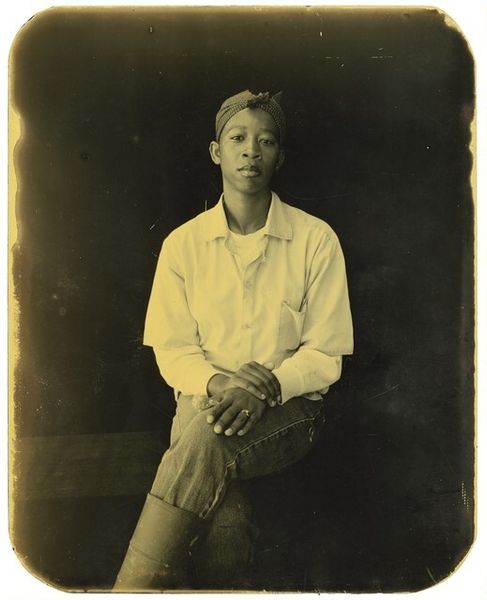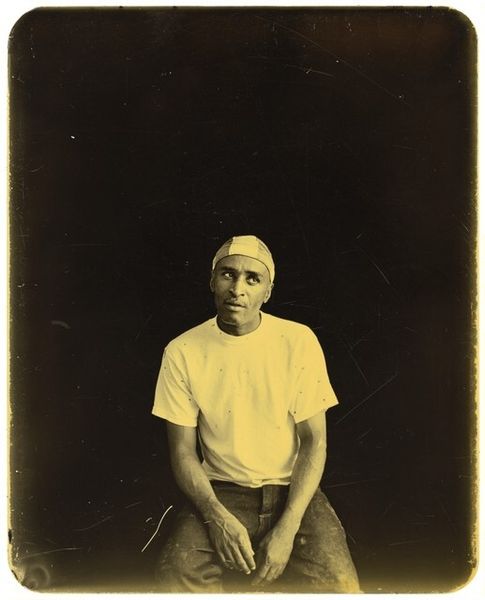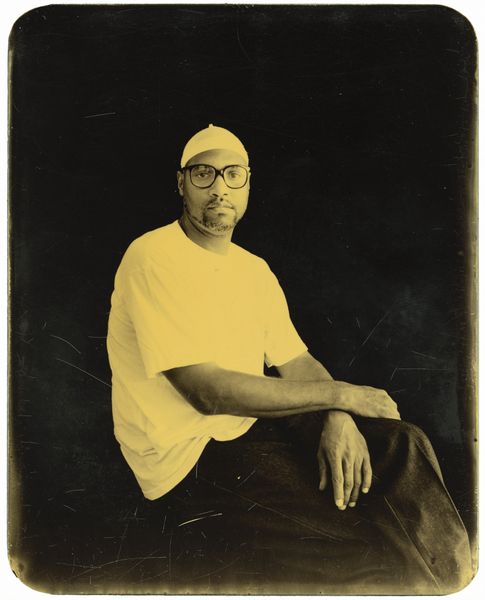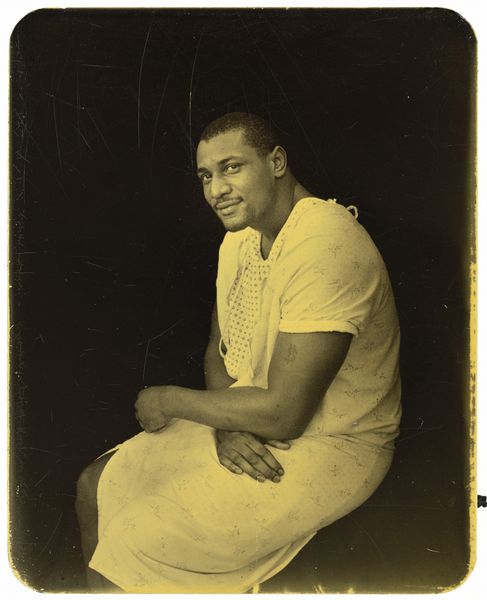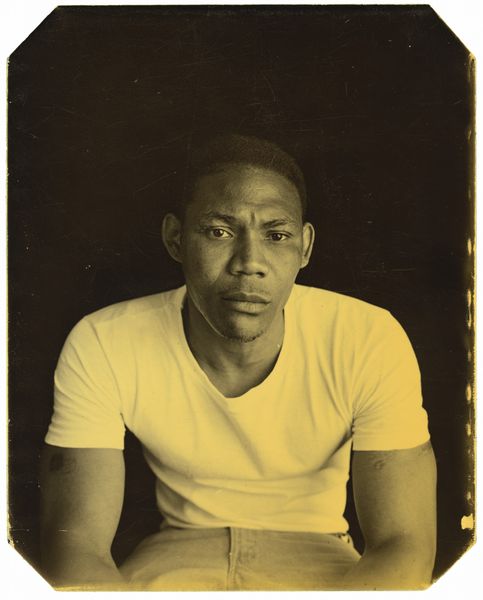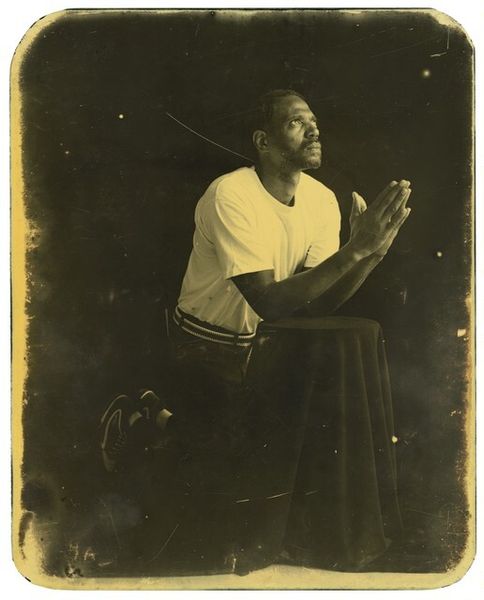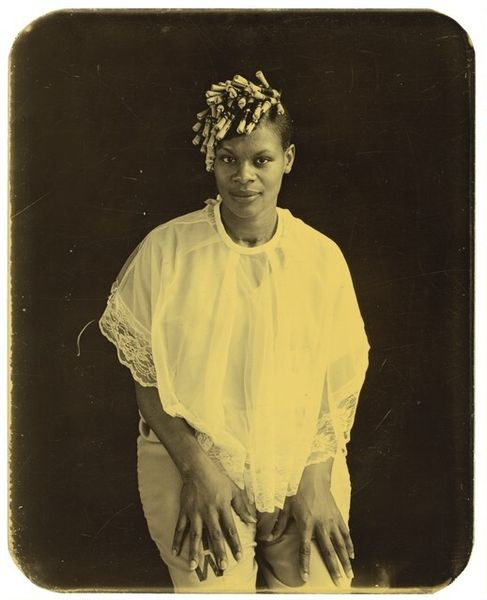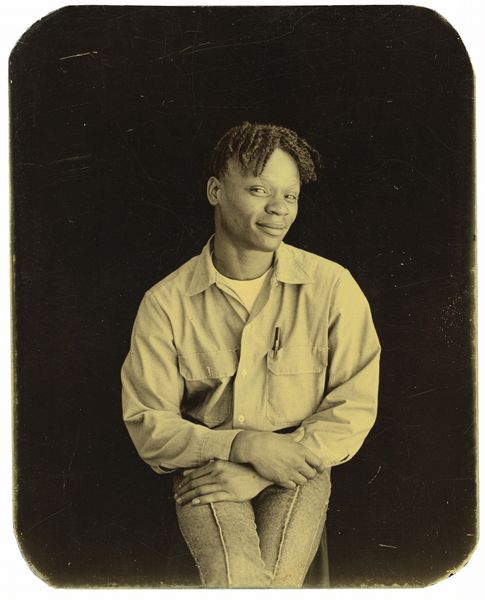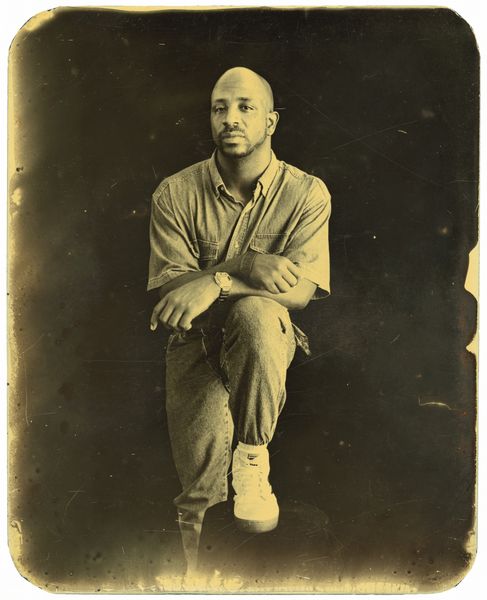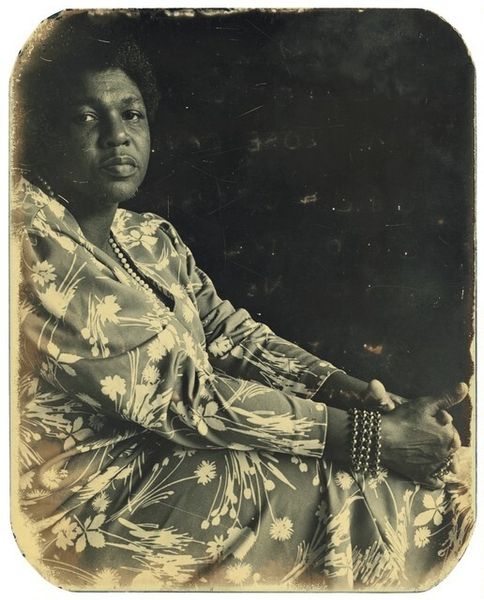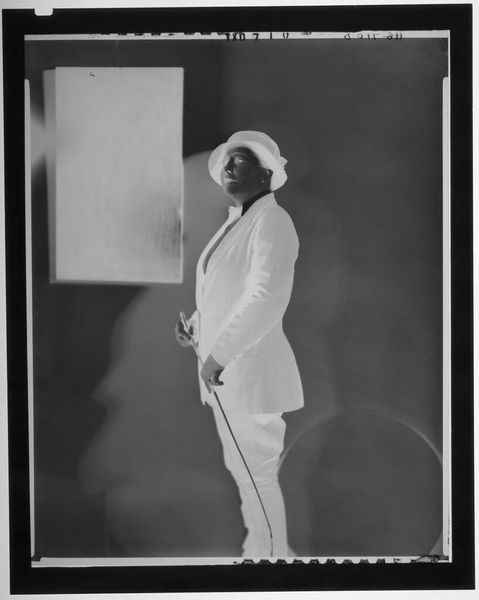
photography, gelatin-silver-print
#
portrait
#
contemporary
#
portrait image
#
photography
#
gelatin-silver-print
#
portrait photography
#
realism
Dimensions: image/plate: 12.7 × 10.2 cm (5 × 4 in.)
Copyright: National Gallery of Art: CC0 1.0
Curator: Deborah Luster created this arresting portrait, "St. Gabriel, Louisiana," as part of her "One Big Self: Prisoners of Louisiana" series. The image, dating from 1999, is rendered in gelatin silver print. Editor: It has a very arresting quality. Almost sepia toned, with its aged golden hue... an eerie sense of serenity too. It definitely feels both historic and strangely contemporary. Curator: Luster's use of gelatin silver print gives it that feeling, certainly. The antiquated process creates a depth and texture that digital photography often lacks, and forces the audience to confront the history of photographic production itself. Her deliberate use of such a laborious process is also a statement about care, each print requiring significant manual involvement. Editor: Absolutely. Looking at the subject--the individual is framed with stark, bold clothing and crisp white sneakers--against that very dense backdrop, makes me immediately wonder about the individual’s personal narrative, about identity and circumstance and maybe questions around the justice system. It makes one ponder, too, how systems of power impact people's lives, no? Curator: Precisely! Luster aims to bring attention to incarcerated individuals often forgotten, making the portrait more about labor and care, of both the subject and photographer and less about artifice. She is revealing a social narrative through the materiality of photography. She documented these lives as a sort of restorative act, revealing dignity where society often denies it. Editor: You're right. The composition has a level of both empathy and detachment; like we are observers but also participants in this exchange. I admire that—as Luster asks us to rethink preconceived notions by providing a respectful space for these portraits to just... be. The fact it's not stylized or excessively composed feels purposeful. Curator: The imperfections almost amplify the subject’s reality. Looking at her hands—her face—these imperfections are perfect. Editor: It reminds me about how portraits allow the invisible, like trauma and resilience, to take on visibility. Curator: Yes, Luster masterfully layers the labor of art, of photography, to invite the audience to look deeper than any immediate biases they hold. Editor: Definitely. This single work speaks volumes about how visual arts practices can function as tools of social justice and provide healing.
Comments
No comments
Be the first to comment and join the conversation on the ultimate creative platform.
